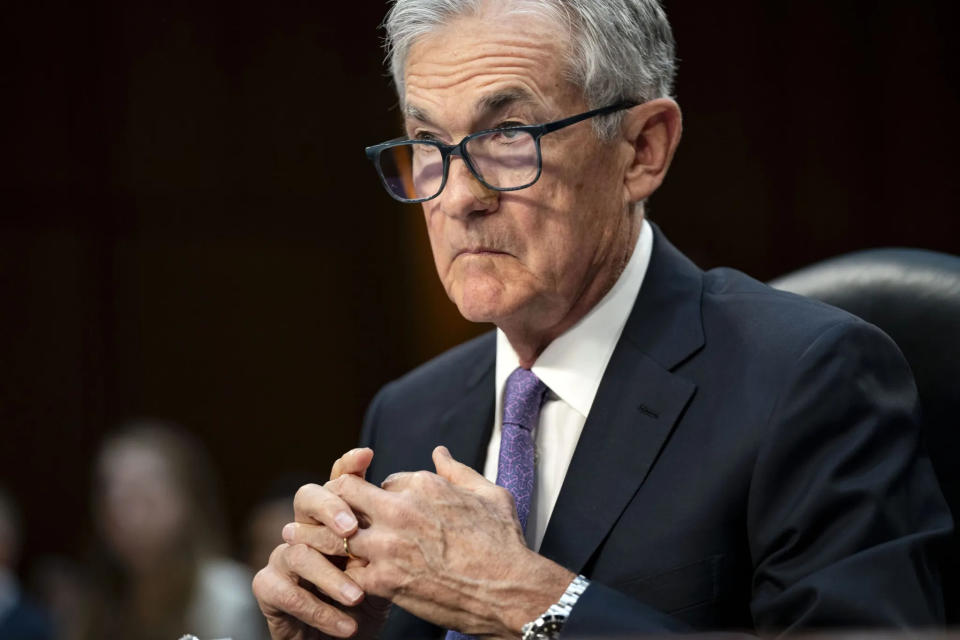An interest rate cut won’t fix the housing crisis, Moody’s economist says

We’re in some weird times. On Friday, it was a weaker-than-expected jobs report, and on Monday, there was a global stock market meltdown. The one bright spot is that weekly mortgage rates fell to their lowest level since February, so that’s good news for potential homebuyers or those who have been waiting to refinance or sell. They could even fall further because an interest rate cut from the Federal Reserve in September is all but guaranteed. Even so, it won’t fix the country’s housing crisis.
It’s still a volatile market, and for one thing, lower mortgage rates matter less if unemployment continues to rise; it’s hard to buy a home if you’re not working and earning money. Plus, mortgage rates still haven’t hit that magic number or sweet spot at around or under 6%, so it might not be enough to bring everyone on the sidelines back in the game. Either way, it’s important to note the federal funds rate, which is sitting at a more than two-decade high, also influences borrowing costs. The point is, there’s a lot of uncertainty at the moment, and even with an interest rate cut, it won’t magically resolve the fact that there are still not enough homes to house the country’s population.
In a recently published analysis, titled “A September rate cut is not enough to relieve the housing affordability crisis,” a Moody’s economist explained the bond market has already priced in a rate cut, whether it be half a point or a quarter. The average interest rate on a 30-year fixed mortgage is correlated to yields on 10-year Treasury bonds, which have fallen to roughly 3.7%, the lowest level since May 2023. Fixed-rate mortgages and Treasury yields tend to pair together like wine and cheese. But how this will all affect the housing world is far from certain.
When the Fed cuts interest rates, it’s to stimulate the economy so more borrowing can happen, to put it simply. If the central bank waits too long, some fear the economy is in for a hard landing; if it cuts too quickly, some fear inflation will shoot back up. Neither is good for housing.
“Even with the first potential rate cut of this hiking cycle likely to occur in September, the federal funds rate would still be in restrictive territory with additional cuts needed to help restore the housing market to a more balanced equilibrium,” the economist, Nick Villa, wrote.
The Fed started raising interest rates more than two years ago, and it sent mortgage rates soaring; gone were the historical lows of the pandemic. Daily mortgage rates reached 8.03% in October last year, and they’ve gone down since then, particularly in the last few days on the back of cool and weak economic data. Yesterday daily mortgage rates hit a 52-week low, coming in at 6.34% (although they’re back up to 6.52% today). But that’s only one part of the equation: Before all the mortgage rate drama, home prices rose substantially. That hasn’t reversed, even if home price inflation has slowed. “After roughly 15 years of the cost of renting exceeding the cost of homeownership, the converse became true,” he wrote, and the difference between the two eventually became the highest on record.
Villa continued: “Rate cuts will certainly help, but based on where the median existing home price is as of June 2024, a 25- to 50-bps reduction in the 30-year fixed mortgage rate would not be enough to turn the tables such that renting becomes more expensive again. Roughly speaking, the 30-year fixed mortgage rate would need to drop below 5.25% for this to occur based on a median-priced home.” (The median existing home sale price is $426,900; the median sales price for new homes is $417,300, as of June, the latest available data).
It’s supply, that’s the solution. And there are essentially two things affecting supply: the lock-in effect and years of underbuilding that resulted in a shortfall of homes. The former is a temporary phenomenon. Basically, because mortgage rates rose considerably so swiftly, anyone who locked in a low rate before doesn’t want to sell and give it up, “preventing more supply from being released onto the market,” as Villa explained it. Luckily, there’s more supply at the moment than two years ago. (In January 2022, there was only 1.6 months’ supply—meaning the number of months it would take for inventory to sell at the current sales pace—Villa mentioned, referring to data from the National Association of Realtors, and in June, there was 4.1 months’ supply. Six months is considered balanced.) But it’s no secret that all the while, we’ve seen the median existing home sales price hit all-time high after all-time high.
“While lower mortgage rates are one possibility that could unlock more supply, at the end of the day, the country has a structural housing deficit and needs to continue building more homes,” Villa wrote, bringing us to the latter: “years of underbuilding since the Global Financial Crisis have led to an estimated housing shortage of at least 1.9 million homes.”
There are several various estimates on the extent of how many homes the country is missing, all in the millions. More housing was built last year, and this year is set to be another strong one, according to Moody’s, but that plus an interest rate cut isn’t enough to solve all. Fed Chair Jerome Powell has said as much himself: “Problems associated with low rate mortgage [lock-in] and high [mortgage] rates and all that, those will abate as the economy normalizes and as rates normalize,” he said in early March. “But we’ll still be left with a housing market nationally, where there is a housing shortage.”
This story was originally featured on Fortune.com